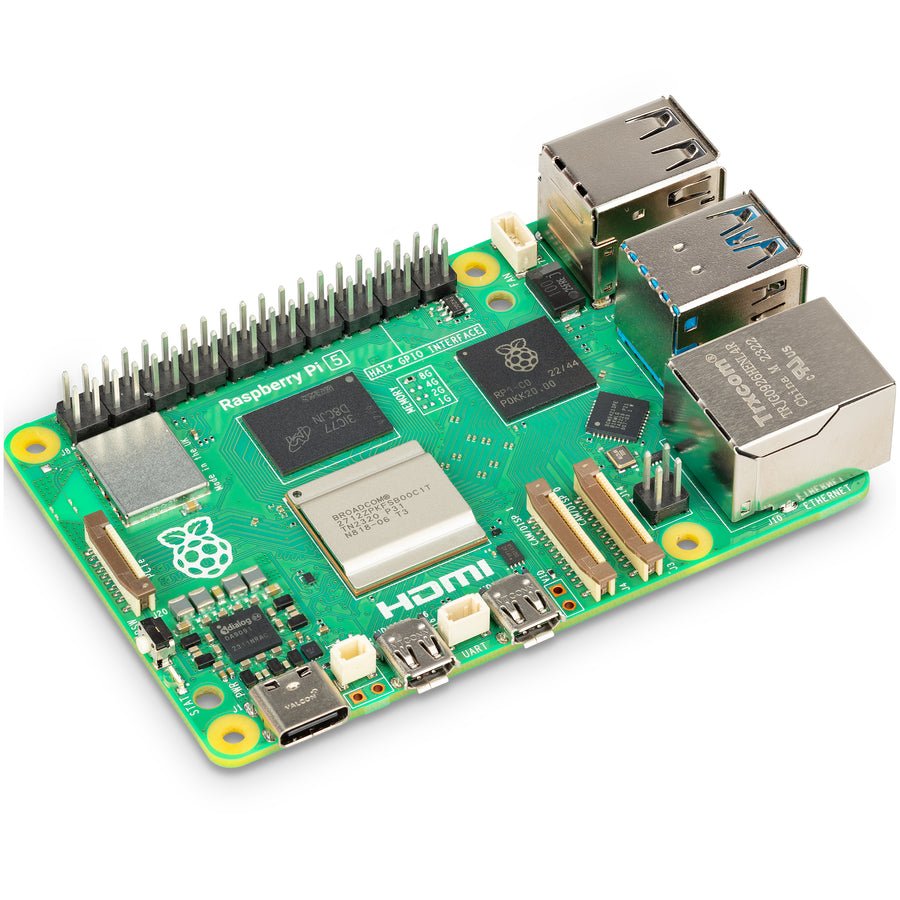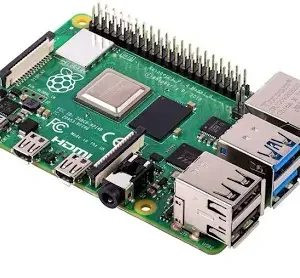Flagship Raspberry Pi SBC performance
The Raspberry Pi 5 introduces a powerful 2.4GHz quad-core, 64-bit Arm Cortex-A76 CPU, equipped with 512KB L2 caches and a 2MB shared L3 cache. This remarkable improvement translates to a 3 times increase in CPU performance compared to its predecessor. The Cortex-A76, built on the new 7nm technology, is a more advanced and power-efficient CPU core compared to the 10nm Cortex-A72, offering superior single-threaded and multi-threaded performance.
Raspberry Pi 5 Specs:
Processor: Broadcom BCM2712 2.4GHz quad-core 64-bit Arm Cortex-A76 CPU, with cryptography extensions, 512KB per-core L2 caches, and a 2MB shared L3 cache
Features:
2.4GHz quad-core, 64-bit Arm Cortex-A76 CPU
VideoCore VII GPU supporting Vulkan 1.2 and OpenGL ES
LPDDR4X-4267 SDRAM (4GB and 8GB options)
PCIe 2.0 x1 interface for fast peripherals ( Requires adapter)
Dual-band 802.11ac Wi-Fi 2.4 GHz and 5.0 GHz
Bluetooth 5.0 / Bluetooth Low Energy (BLE)
Micro SD card slot, supports high-speed SDR104
4X USB Ports (2 × 3.0 , supporting 5Gbps + 2 X 2.0)
Gigabit Ethernet, with PoE+ capabilities (requires Pi 5 PoE+ HAT)
2 × 4 lane MIPI camera /display transceivers
5V/5A USB-C power input (PD enabled for higher USB power)
Raspberry Pi standard 40-pin header
Real-Time Clock (RTC), powered from an external battery (Sold Separately)
On-board power button
This marks a significant milestone as it’s the first full-size Raspberry Pi computer that utilizes silicon developed in-house by Raspberry Pi. The RP1 “southbridge” plays a pivotal role in providing most of the I/O capabilities for the Raspberry Pi 5, bringing about a substantial improvement in peripheral performance and functionality.
The overall USB bandwidth has been more than doubled, resulting in faster data transfer speeds for external UAS drives and other high-speed peripherals. In addition, the two-lane 1Gbps MIPI camera and display interfaces found on earlier models have been replaced by a pair of four-lane 1.5Gbps MIPI transceivers, tripling the total available bandwidth. This versatile setup supports any combination of up to two cameras or displays.
Peak SD card performance has also seen a doubling in speed, thanks to the support for the high-speed SDR104 mode. Furthermore, for the first time, this platform introduces a single-lane PCI Express 2.0 interface, providing the means to connect high-bandwidth peripherals seamlessly






Reviews
There are no reviews yet.